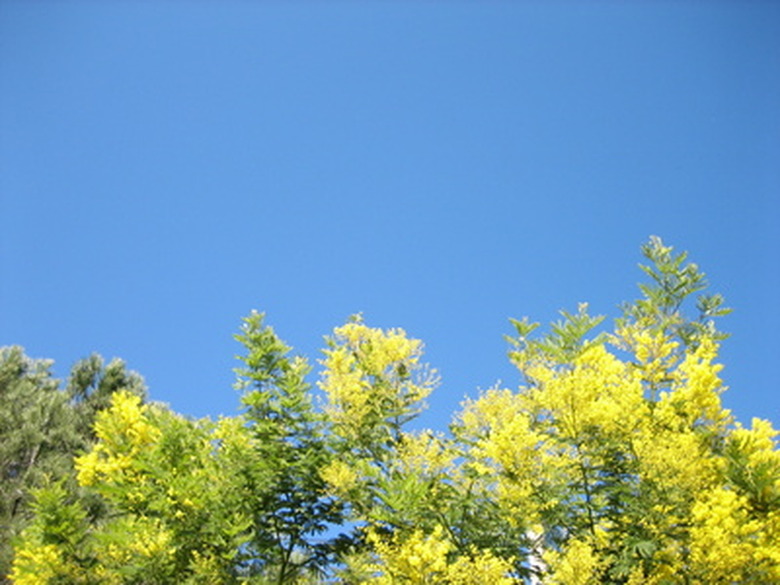Mimosa Tree Wilt Treatment
Mimosa wilt and mimosa vascular wilt are popular names for a soil-borne fungus, Fusarium oxysporum (or Fusarium wilt), which attacks numerous plant species. While there are no known chemical means of eliminating fusarium wilt, there are proven ways to prevent infection and ways to respond when your tree shows symptoms.
Nature of Mimosa Wilt
Mimosa wilt, or Fusarium wilt, is one of a group of vascular fungal wilts that includes the well-known Dutch elm disease, which has killed numerous trees in the U.S. and Canada. It disrupts the movement of water and nutrients from the roots to the trunk. Mimosa wilt infects the roots, moving from smaller roots to larger roots and eventually into the tap roots. No insect is known to carry it.
Symptoms
The leaves droop. They then turn yellow, dry out, and fall from the tree. Once leaves fall from a stem, the fungus produces orange to pinkish fruiting bodies on the bark. Suckers sprout from the trunk. The sapwood of trunks and branches turn brown. Cut stems show discolored rings, and the roots have dark rings. Fissures and splits in the bark can ooze a gummy or rubbery excretion.
- Mimosa wilt and mimosa vascular wilt are popular names for a soil-borne fungus, Fusarium oxysporum (or Fusarium wilt), which attacks numerous plant species.
- It disrupts the movement of water and nutrients from the roots to the trunk.
Preventing Mimosa Wilt
No proven chemical method exists for killing the fungus once it has infected a tree. Trees in compacted soil near construction areas are especially susceptible to infection. Avoid handling infected soil, seedlings or trees. Fruiting bodies can live for two years on a root collar or dead trunk, producing spores that can be washed off by the rain and spread to the roots of other trees. Infected seeds can also spread the disease.
If you buy mimosa seedlings from a nursery, be sure they are free of fusarium wilt. Before you plant mimosa in soil that has a history of fusarium wilt, treat the soil with methyl bromide or other biocide. Do not prune infected trees and then healthy trees unless you sterilize your shears, saws and other equipment.
- No proven chemical method exists for killing the fungus once it has infected a tree.
- Fruiting bodies can live for two years on a root collar or dead trunk, producing spores that can be washed off by the rain and spread to the roots of other trees.
When Your Tree Is Infected
Remove and burn infected branches. Use a balanced 10-10-10 fertilizer to alleviate symptoms. Water the tree frequently, as necessary.
Resistant Cultivars
The best way to control Mimosa wilt is to plant hybrid varieties that resist the disease. The hybrid cultivar Charlotte, which has light-red flowers, resists fusarium wilt; and Tyron, with flowers that are a deeper red, resists mimosa wilt. Other resistant cultivars include redbud, honey locust and New Mexico locust.
